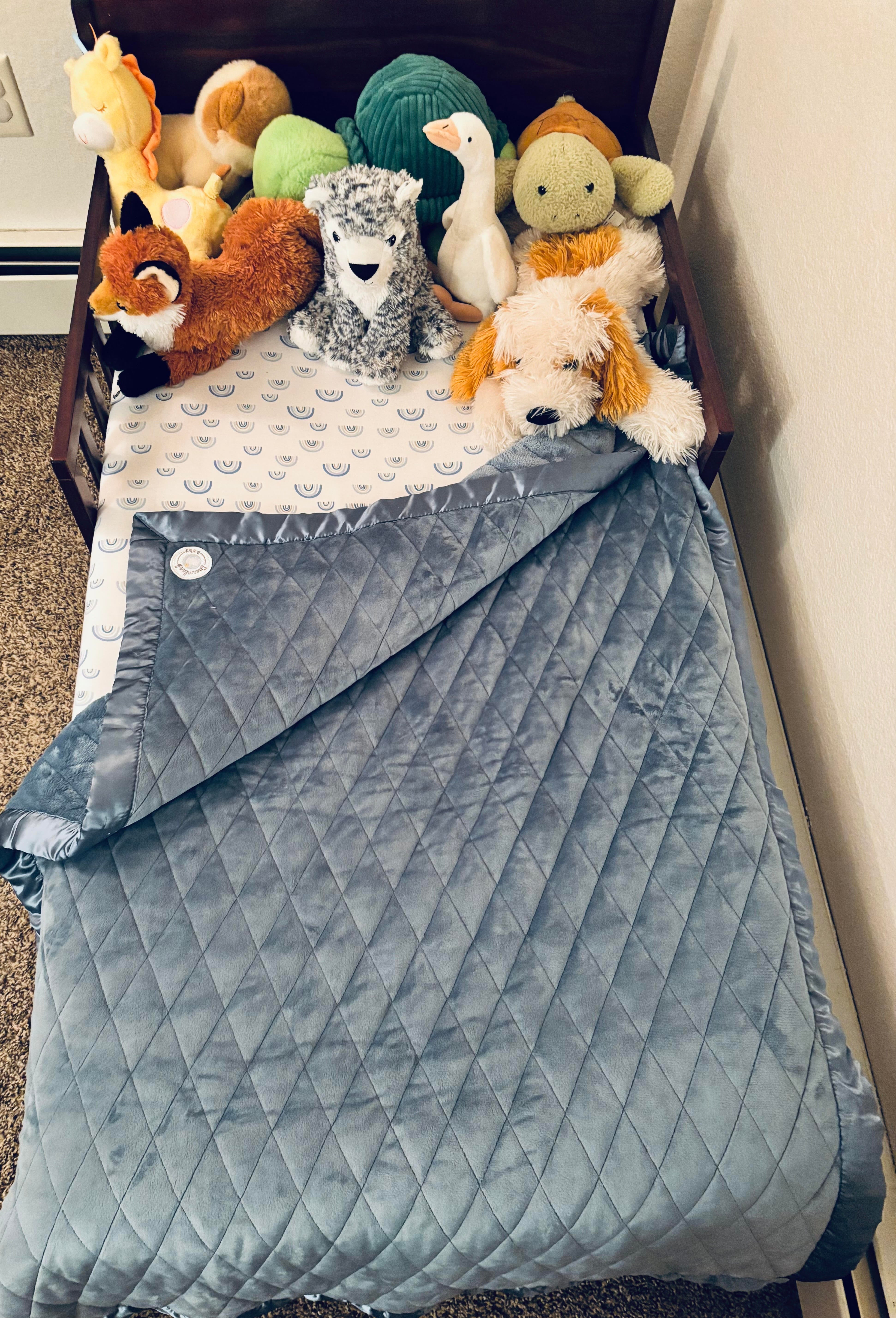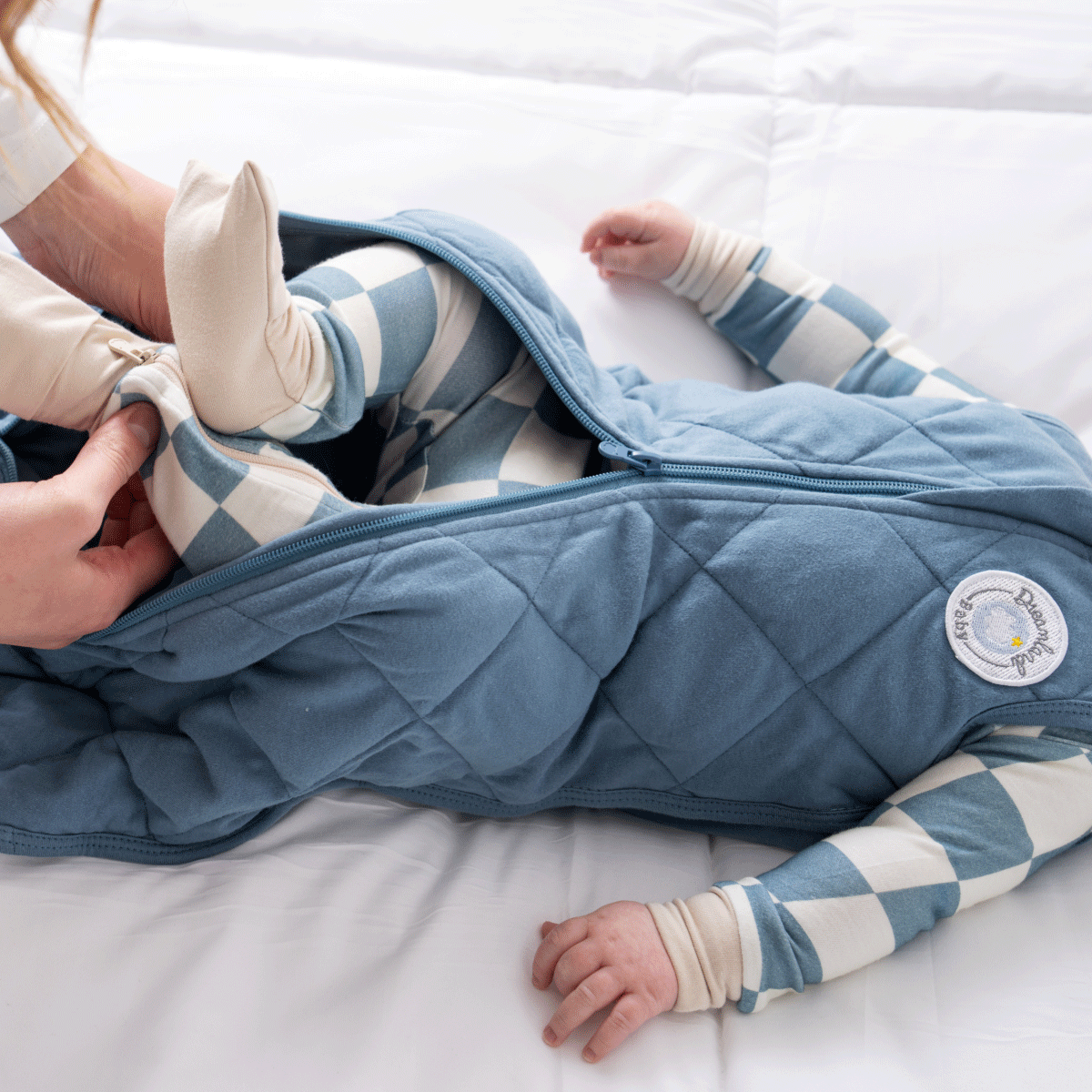Breaking Down How Many Crib Sheets Should You Have
Whether you’re creating a registry or just beginning the journey as a parent, it can be difficult to know exactly what you will need. While it’s always better to be safe than sorry, baby products can add up and space may be limited with a new baby in the house. When it comes to bedding for your baby, you will want to have plenty on hand, because accidents are bound to happen with a baby. Plus, your laundry may take a backseat from time to time.
With a baby you can expect a flurry of leaky diapers, spit up, and other messes to be grounds to have more than one crib sheet or bedding set - but how many is enough, and what qualifies as too much? Keep reading as we breakdown just how many bedding sets or crib sheets may be necessary throughout the different stages of infanthood, how often you should change that bedding, and what kind of bedding is best for babies.
How much crib bedding do you need?
How much bedding you need is really a personal decision. Consider factors such as how often you do laundry and how often you think you might need to change crib bedding. For most parents a few multiples will get the job done. It’s not uncommon to end up with a linen closet full of baby blankets. From impulsive purchases to irresistible gifts, it’s easy to end up with extra bedding, and that’s not a bad thing. However, until your baby gets older you should avoid anything else besides a fitted crib sheet.
When it comes to those adorable crib bedding sets with bumpers and ruffle skirts that match your nursery theme perfectly, skip it. The American Academy of Pediatrics (AAP) strongly advises against loose items in your baby’s sleep space altogether due to the risks of suffocation, strangulation, and SIDS. Items such as a blanket, pillow, and stuffed animals should be kept out of your baby’s sleep space until they are at least 12-18 months and preferably until they transition to a toddler bed. Waiting until your baby moves to their “big kid bed” can drastically reduce the chances of a sleep related incident since those items will no longer run the risk of being pinned between your little one's face and the bars of their crib.

Shop Dreamland Baby Sleep Sacks & Swaddles
How often should I change your baby's bedding?
In general, changing the bedding that you do have in your baby’s sleep space once a week is sufficient. However, there are some scenarios that may have you rolling through your baby’s bedding and crib sheet collection much, much faster:
- Spit up: Some babies spit up more than others and few hardly spit up at all, but whether your baby is breastfed or formula fed, their spit up will likely smell like curdled milk if it is left to sit. No one wants to sleep on that!
- Drool: A drop or two of drool on their crib sheet can be dabbed with a wipe, but when those teeth start emerging your baby could wake up in a puddle of their own drool. Be prepared to change sheets much more frequently during teething stages.
- Leaky diapers: No brainer! Your baby will need a new sheet as soon as the leak is discovered - regardless of what is leaking. If your little one has frequent diaper leaks, you may want to experiment with a different diaper brand or go up in size.
Does my baby need a comforter?
While your baby does not need a comforter, otherwise known as a lovey, it could be a good idea to introduce one to them in their earlier months. A comforter is often made of silky smooth or buttery soft fabrics that your baby will find comfort in, which could make it easier for them to relax and doze off. Keep in mind, though, that comforter use for a young baby should always be monitored. Many parents will remove the lovey from their child's grip and out of their crib as soon as they are asleep. Just as pillows, blankets, bumpers, and stuffed animals should be avoided in unsupervised sleep spaces until at least 12-18 months old, so should a comforter. That said, if your baby does like to snuggle a comforter in supervised or contact naps, it could help them transition to independent sleep when they are old enough for soft and loose items in their bed.
If your baby is struggling to fall asleep, consider a weighted sleep sack, swaddle, or blanket. At Dreamland, we design weighted sleep products for babies that prioritize safety, comfort, and a good night’s sleep. Our products are eco-conscious, hypoallergenic, and proven to help babies fall asleep faster and stay asleep longer. For newborn babies, the gentle weight can mimic the feeling of a hug or the tight knit feeling they remember from the womb. Pair our expertly designed weighted swaddle with a sound machine and turn the lights off. You’ve just discovered the perfect combination for a good night sleep for you and your baby.
How many blankets does a newborn need?
Since newborns do not sleep with blankets in their crib, you could get away with having just a few in your linen closet. Newborns typically use more swaddle blankets than regular blankets, since swaddling decreases the moro reflex and promotes longer sleep. Reminiscent of the womb, swaddles can help babies to feel calm, secure, and comfortable. Swaddle use should be discontinued as soon as your baby begins to rock side to side in preparation to roll over.
Dreamland Baby creates gently weighted and non weighted swaddles in both 100% organic cotton and our luxurious viscose from bamboo materials. Our weighted swaddles are designed with our exclusive CoverCalm® technology to help your newborn get the sleep that they need for optimal development. Once your newborn begins to show signs of rolling, try our transitional swaddles for the same comfort - arms out!
Are crib sheet bedding sets necessary?
Since traditional blankets do not belong inside of a crib, crib sheets with a matching bed set are not necessary for your young infant. When looking for the best crib sheets, focus on finding one that is well fitting, soft, breathable, and made from natural fibers. Our organic cotton and bamboo crib sheets are perfect for a safe and comfortable night’s sleep.
What type of bedding should you buy for a newborn?
When it comes to newborn bedding, know that less is more. Stick with a tight fitting crib sheet and a swaddle (until they begin rolling of course) for bedtime to keep your baby safe. Avoid crib bumpers, crib skirts, quilts, and anything similar for the inside of your baby’s sleep space.
Conclusion
Being a parent comes with a million questions, and no handbook. At Dreamland Baby, we know that your baby’s safety is what is most important to you. Rest assured, it is important to us as well. We strive to bring safety and comfort together into all of our products. Designed in partnership with pediatricians, NICU nurses, and certified sleep consultants and reviewed by pulmonologists for extra peace of mind, you can count on any of our mindful sleep solutions to help your baby (and you!) get the best sleep - safely.



